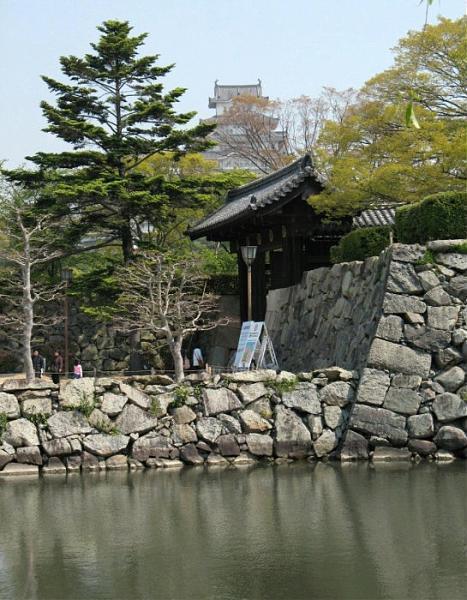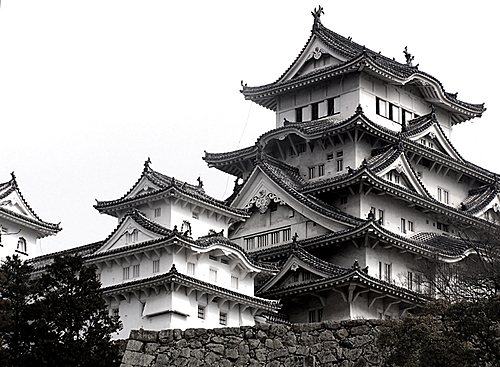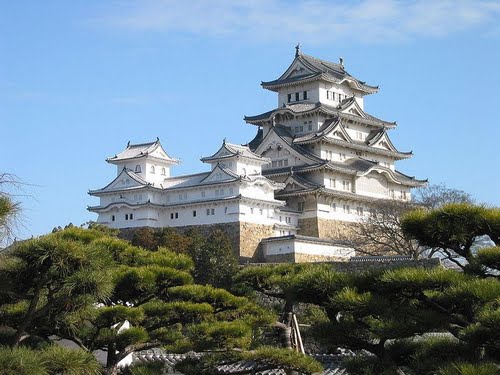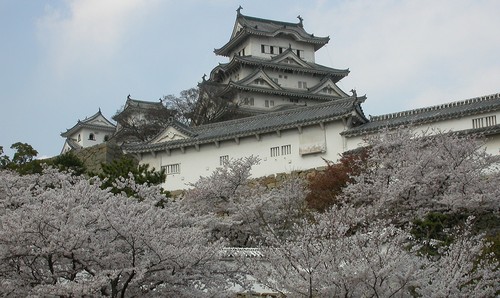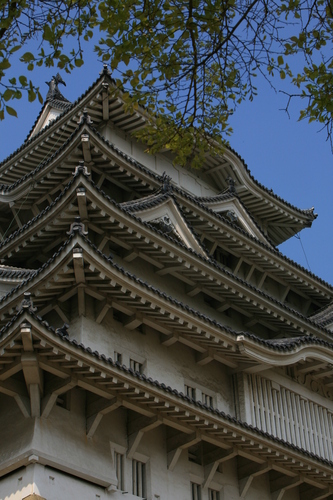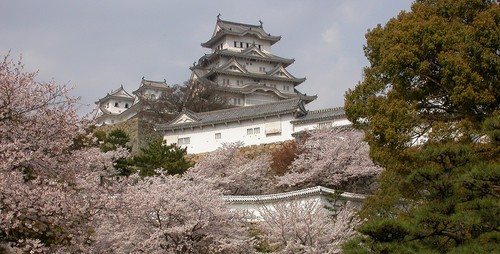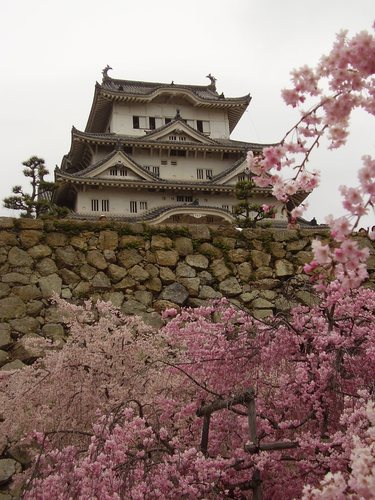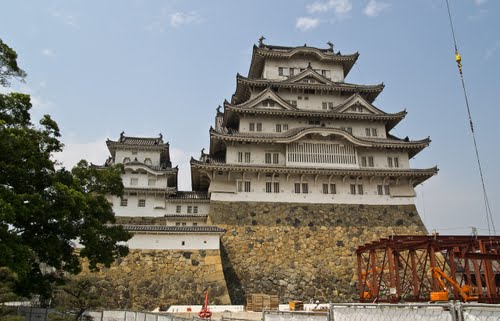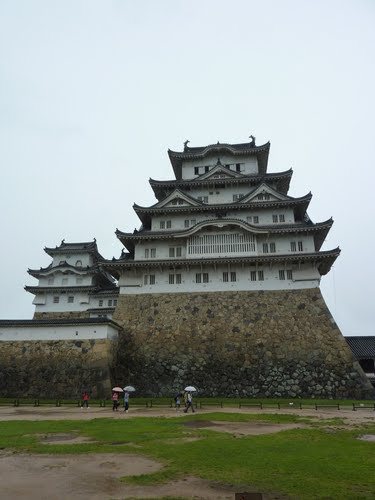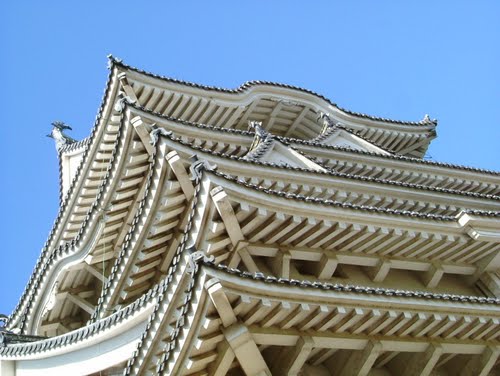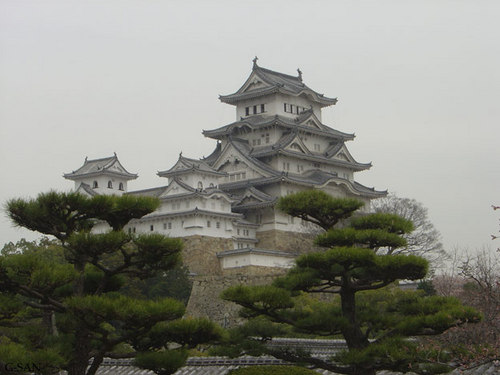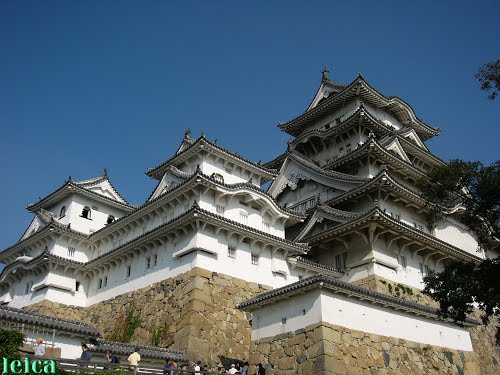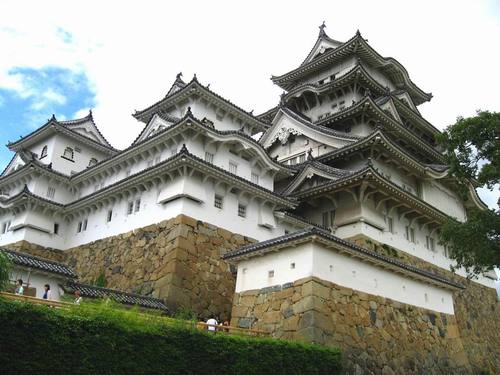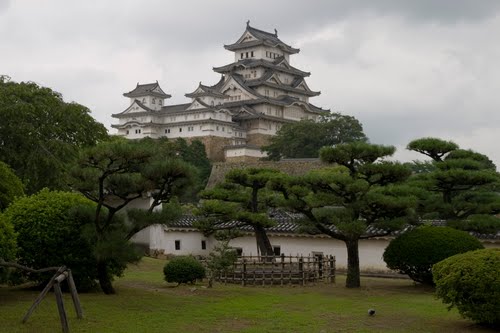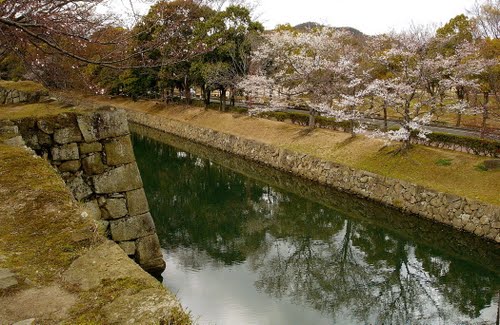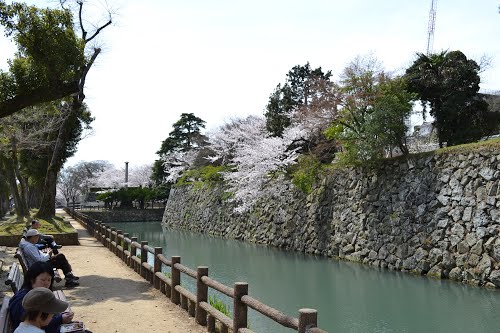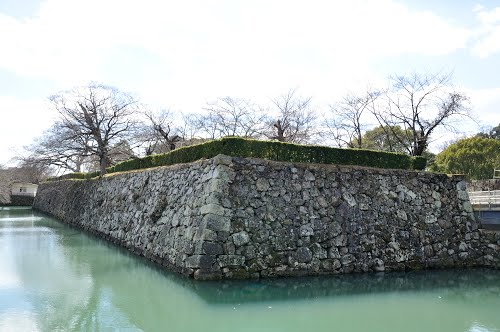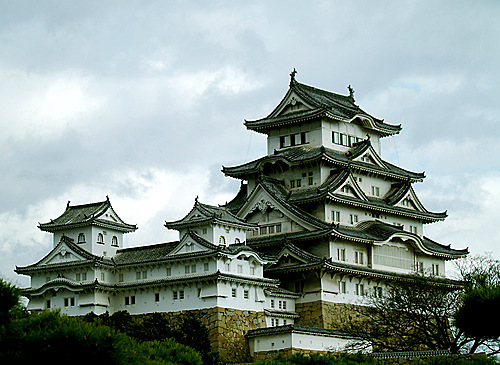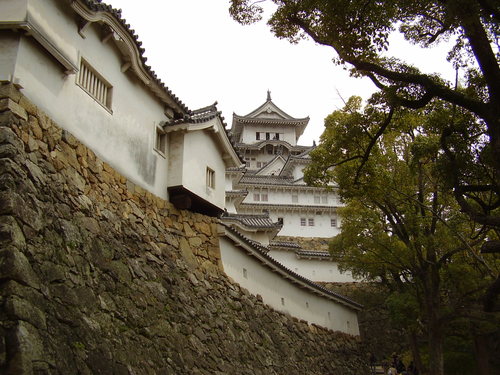Himeji Castle is a hilltop Japanese castle complex located in Himeji, in Hyogo Prefecture, Japan. The castle is regarded as the finest surviving example of prototypical Japanese castle architecture, comprising a network of 83 buildings with advanced defensive systems from the feudal period. The castle is frequently known as Hakuro-jo or Shirasagi-jo ("White Egret Castle" or "White Heron Castle") because of its brilliant white exterior and supposed resemblance to a bird taking flight.
Himeji Castle dates to 1333, when Akamatsu Norimura built a fort on top of Himeyama hill. The fort was dismantled and rebuilt as Himeyama Castle in 1346, and then remodeled into Himeji Castle two centuries later. Himeji Castle was then significantly remodeled in 1581 by Toyotomi Hideyoshi, who added a three-story castle keep. In 1600, Tokugawa Ieyasu awarded the castle to Ikeda Terumasa for his help in the Battle of Sekigahara, and Ikeda completely rebuilt the castle from 1601 to 1609, expanding it into a large castle complex. Several buildings were later added to the castle complex by Honda Tadamasa from 1617 to 1618. For over 400 years, Himeji Castle has remained intact, even throughout the extensive bombing of Himeji in World War II, and natural disasters such as the 1995 Great Hanshin earthquake.
Himeji Castle is the largest and most visited castle in Japan, and it was registered in 1993 as one of the first UNESCO World Heritage Sites in the country. The area within the middle moat of the castle complex is a designated Special Historic Site and five structures of the castle are also designated National Treasures. Along with Matsumoto Castle and Kumamoto Castle, Himeji Castle is considered one of Japan's three premier castles. In order to preserve the castle buildings, it underwent restoration work for several years and reopened to the public on March 27, 2015. The works also removed decades of dirt and grime, restoring the formerly gray roof to its original brilliant white color.
History
Himeji Castle's construction dates to 1333, when a fort was constructed on Himeyama hill by Akamatsu Norimura, the ruler of the ancient Harima Province. In 1346, his son Sadanori demolished this fort and built Himeyama Castle in its place. In 1545, the Kuroda clan was stationed here by order of the Kodera clan, and feudal ruler Kuroda Shigetaka remodeled the castle into Himeji Castle, completing the work in 1561. In 1580, Kuroda Yoshitaka presented the castle to Toyotomi Hideyoshi, and in 1581 Hideyoshi significantly remodeled the castle, building a three-story keep with an area of about 55 m².
Following the Battle of Sekigahara in 1600, Tokugawa Ieyasu granted Himeji Castle to his son-in-law, Ikeda Terumasa, as a reward for his help in battle. Ikeda demolished the three-story keep that had been created by Hideyoshi, and completely rebuilt and expanded the castle from 1601 to 1609, adding three moats and transforming it into the castle complex that is seen today. The expenditure of labor involved in this expansion is believed to have totaled 25 million man-days. Ikeda died in 1613, passing the castle to his son, who also died three years later. In 1617, Honda Tadamasa and his family inherited the castle, and Honda added several buildings to the castle complex, including a special tower for his daughter-in-law, Princess Sen.
In the Meiji Period (1868 to 1912), many Japanese castles were destroyed. Himeji Castle was abandoned in 1871 and some of the castle corridors and gates were destroyed to make room for Japanese army barracks. The entirety of the castle complex was slated to be demolished by government policy, but it was spared by the efforts of Nakamura Shigeto, an army colonel. A stone monument honoring Nakamura was placed in the castle complex within the first gate, the Hishi Gate. Although Himeji Castle was spared, Japanese castles had become obsolete and their preservation was costly.
When the han feudal system was abolished in 1871, Himeji Castle was put up for auction. The castle was purchased by a Himeji resident for 23 Japanese yen (about 200,000 yen or US$2,258 today). The buyer wanted to demolish the castle complex and develop the land, but the cost of destroying the castle was estimated to be too great, and it was again spared.
Himeji was heavily bombed in 1945, at the end of World War II, and although most of the surrounding area was burned to the ground, the castle survived intact. One firebomb was dropped on the top floor of the castle but failed to explode. In January 1995, the city of Himeji was substantially damaged by the Great Hanshin earthquake, but Himeji Castle again survived virtually undamaged, demonstrating remarkable earthquake resistance. Even the bottle of sake placed on the altar at the top floor of the keep remained in place.


